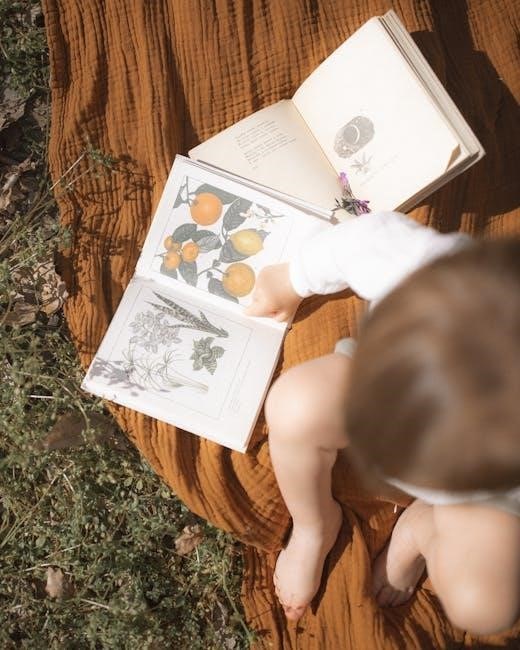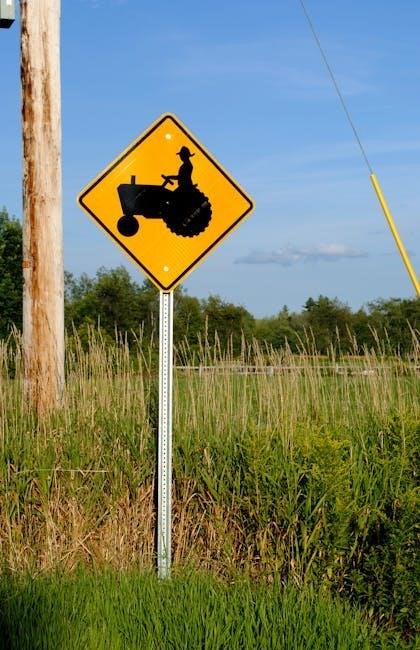The Spiderwick Chronicles Field Guide: A Comprehensive Plan
This detailed field guide unveils the fantastical realm, detailing creatures and lore, serving as the series’ cornerstone and launching point for thrilling adventures.
It introduces readers to a hidden world, sparking curiosity and setting the stage for the Grace children’s extraordinary journey into the Invisible World.
Arthur Spiderwick’s meticulous documentation provides a unique lens, blending fantasy with a sense of realism and driving the narrative’s suspenseful core.
Arthur Spiderwick’s Field Guide to the Fantastical World Around You isn’t merely a book; it’s a portal. Discovered within the dusty attic of the Spiderwick Estate, this handmade volume immediately captivates the Grace children, Jared, Simon, and Mallory, initiating their descent into a hidden reality.
The Guide serves as the primary source of information regarding the faerie world, detailing its inhabitants – from mischievous goblins to helpful brownies – and their intricate behaviors. It’s a compendium of observations, sketches, and warnings, meticulously compiled by Arthur Spiderwick himself.

More than just a bestiary, the Field Guide is presented as a genuine artifact, complete with aged pages and handwritten notes, lending an air of authenticity to the fantastical claims within. It’s the catalyst for the entire series, driving the plot and immersing readers in a world where magic lurks just beyond perception.
The History of Arthur Spiderwick

Arthur Spiderwick, the author of the eponymous Field Guide, is a somewhat enigmatic figure. His history is revealed through snippets within his journal, interwoven throughout the Guide itself and connected to the broader Spiderwick Chronicles. He dedicated his life to researching and documenting the Invisible World, a realm of faeries and fantastical creatures existing alongside our own.
Driven by a thirst for knowledge and a desire to understand the unseen, Spiderwick meticulously recorded his observations, creating a comprehensive record of faerie lore. However, his research came with a warning: the knowledge contained within the Guide could be dangerous if it fell into the wrong hands.
His ultimate fate remains partially shrouded in mystery, but his legacy lives on through the Field Guide, a testament to his dedication and a key to unlocking the secrets of the faerie world.
The Discovery of the Guide by the Grace Children
Jared, Simon, and Mallory Grace stumble upon Arthur Spiderwick’s Field Guide while exploring the dusty attic of their newly-inherited, dilapidated mansion. The book, described as mysterious and handmade, immediately captivates Jared, who begins to decipher its secrets.
Initially dismissed by Simon and Mallory, the Guide’s contents soon become undeniably real as they witness evidence of the Invisible World firsthand. The discovery isn’t merely finding a book; it’s unlocking a hidden reality, thrusting them into a world of faeries, goblins, and other fantastical creatures.
This pivotal moment marks the beginning of their adventure, as the Guide becomes their essential, albeit dangerous, companion in navigating this unseen realm.
The Significance of the Spiderwick Estate
The Spiderwick Estate isn’t simply a setting; it’s a nexus point, a place where the veil between the human world and the Invisible World is exceptionally thin. The ramshackle mansion, steeped in history, has long been a haven for faeries and other creatures, attracting their attention for generations.
Arthur Spiderwick himself chose this location for his research, recognizing its unique properties. The estate’s grounds and the house itself are imbued with magical energy, making it a focal point for supernatural activity.
The Grace children’s move to the estate isn’t coincidental; it’s a catalyst, drawing them into the world documented within the Field Guide.
Core Concepts of the Invisible World
The Invisible World, as detailed in Arthur Spiderwick’s Field Guide, operates under different rules than our own. Faeries aren’t simply magical beings; they are governed by ancient laws and possess distinct weaknesses. Knowledge is power, and understanding these rules is crucial for survival.
Secrecy is paramount. The faeries actively conceal their existence from humans, and revealing their secrets can have dire consequences. The Guide itself is a dangerous artifact, capable of disrupting the balance between worlds.
Respect for nature and the old ways is essential. The fae are deeply connected to the natural world, and disrespecting it can incur their wrath.
Faeries: A General Overview
Faeries, as categorized within Arthur Spiderwick’s Field Guide, are diverse and not the benevolent creatures of common folklore. They range from helpful brownies to mischievous sprites and dangerous redcaps, each possessing unique characteristics and behaviors.
Generally, faeries are tied to the natural world, drawing power from forests, water, and even household spaces. They are often invisible to humans, requiring specific means – like the Field Guide itself – to perceive them.
Their motivations are often enigmatic, driven by ancient rules and a disregard for human concerns. Interactions with faeries are rarely simple and frequently carry unforeseen consequences.

Goblins: Characteristics and Behavior
Goblins, as detailed in Arthur Spiderwick’s Field Guide, are generally unpleasant and often malicious creatures inhabiting the darker corners of the faerie world. They are described as being physically grotesque, with warty skin and sharp teeth, and possess a generally unpleasant odor.
Their behavior is characterized by trickery, vandalism, and a penchant for causing minor annoyances, escalating to more serious mischief when provoked. Goblins are often found lurking near human settlements, scavenging for food and causing trouble.
The Guide notes their weakness to iron and a general aversion to cleanliness, offering potential methods for warding them off or mitigating their harmful actions.

Brownies: Helpful Household Spirits
According to Arthur Spiderwick’s Field Guide, Brownies are generally benevolent faeries known for their assistance with household chores, particularly at night. They are described as small, human-like creatures, often appearing as elderly men or women, and are typically shy and reclusive.
However, the Guide cautions that Brownies are easily offended by rudeness or a lack of gratitude. If slighted, they can turn mischievous, causing minor disruptions or even outright sabotage.
Offerings of milk and honey are recommended to appease them, ensuring their continued assistance and preventing any potential negative consequences, as detailed within the Guide’s pages.
Detailed Creature Entries ౼ Part 1

Arthur Spiderwick’s Field Guide meticulously catalogs a diverse array of faerie creatures, beginning with foundational entries. These detailed descriptions extend beyond mere physical appearances, delving into behaviors, habitats, and vulnerabilities.
Initial entries cover creatures like Hobgoblins, known for their mischievous nature and penchant for causing chaos, and Sprites, delicate guardians of the natural world, embodying its beauty and fragility.
Further inclusions detail Grigs, water spirits notorious for their playful tricks and potential dangers. Each entry is accompanied by illustrations and cautionary notes, emphasizing the importance of respect and awareness when encountering these beings.
Hobgoblins: Mischief and Mayhem
Hobgoblins, as detailed in Arthur Spiderwick’s Field Guide, are notorious for their disruptive and often malicious pranks. These creatures thrive on chaos, delighting in unsettling humans and generally causing mayhem within households and surrounding areas.
The Guide notes their physical appearance as generally grotesque, with exaggerated features and a preference for drab, concealing clothing. They are described as being particularly active at night, utilizing their stealth to execute elaborate tricks.
Spiderwick warns against direct confrontation, advising avoidance and protective measures like iron and salt, which are believed to repel them. Their mischief, while often harmless, can escalate if provoked.
Sprites: Nature’s Delicate Guardians

According to Arthur Spiderwick’s Field Guide, Sprites are ethereal beings intrinsically linked to the natural world, serving as delicate guardians of forests and meadows. They are described as diminutive, winged creatures possessing an otherworldly beauty and a shy disposition.
The Guide details their affinity for flowers and sunlight, noting that they often inhabit blossoming plants and are most active during daylight hours. Sprites are generally benevolent, though easily startled and prone to retreating from human interference.
Spiderwick emphasizes the importance of respecting their habitat, warning that disturbing their natural environment can incur their displeasure, manifesting as minor misfortunes.
Grigs: Water Spirits and Their Tricks
Arthur Spiderwick’s Field Guide identifies Grigs as mischievous water spirits inhabiting streams, ponds, and waterfalls. These creatures are described as small, humanoid in shape, and possessing a fondness for playing tricks on unsuspecting travelers.
The Guide cautions against accepting gifts from Grigs, as these are often accompanied by hidden costs or curses. They are known to lead people astray, tangle fishing lines, and generally cause minor disruptions near waterways.
Spiderwick notes that Grigs are not inherently malicious, but rather enjoy amusement at the expense of others, and appeasement through small offerings may deter their pranks.
Detailed Creature Entries ー Part 2
This section of Arthur Spiderwick’s Field Guide expands the bestiary, introducing a further array of fantastical beings beyond the initial entries. It delves into creatures like mermaids, gargoyles, and others, enriching the scope of the Invisible World.
Each entry provides detailed descriptions of appearance, habitat, behaviors, and potential dangers, mirroring the style of the earlier creature profiles. Spiderwick’s meticulous notes offer insights into their lore and weaknesses.
The inclusion of these additional creatures demonstrates the vastness and complexity of the faerie realm, solidifying the Guide as a comprehensive resource for navigating this hidden world.
Boggarts: Illusions and Fear
Boggarts, as detailed in Arthur Spiderwick’s Field Guide, are malicious creatures that thrive on fear and create illusions to torment their victims. They lack a true form, instead manifesting as whatever their target dreads most.
The Guide warns that confronting a Boggart directly is futile; they cannot be fought in a conventional manner. Recognizing their illusory nature and maintaining a calm demeanor are crucial for defense.
Spiderwick’s notes emphasize the importance of understanding a Boggart’s power lies in perception, making mental fortitude the key to resisting their terrifying tricks and escaping their influence.
Nymphs: Beautiful and Enigmatic
According to Arthur Spiderwick’s Field Guide, Nymphs are captivating, yet elusive, creatures deeply connected to nature, often residing near springs, rivers, and forests. They possess an ethereal beauty and a mysterious aura.
The Guide details that while generally not malicious, Nymphs are fiercely protective of their domains and can be dangerous to those who disrespect the natural world. Their intentions remain enigmatic.
Spiderwick cautions observers to approach Nymphs with reverence and caution, noting their ability to influence emotions and perceptions, making interactions unpredictable and potentially alluring.
Redcaps: Dangerous and Violent
Arthur Spiderwick’s Field Guide paints a grim picture of Redcaps – malevolent faeries known for their violent tendencies and unsettling appearance. They are described as small, goblin-like creatures perpetually stained with the blood of their victims.
The Guide warns that Redcaps inhabit ruined castles and remote, desolate areas, preying on travelers and anyone foolish enough to trespass on their territory. They are incredibly strong and relish in causing harm.
Spiderwick emphasizes the extreme danger posed by Redcaps, noting their need to constantly replenish their crimson caps with fresh blood, making them relentless and terrifying adversaries.
Arthur Spiderwick’s Journal Entries
The Field Guide is enriched by excerpts from Arthur Spiderwick’s personal journal, offering a unique and intimate perspective on his research into the faerie world. These entries aren’t merely observations; they reveal his growing obsession and mounting fear.
Spiderwick’s journal provides crucial context, directly linking the Guide’s contents to the events of the Spiderwick Chronicles, showcasing his firsthand experiences with the creatures he documents.
These snippets offer insights into his research methods, detailing his challenges and discoveries, and highlighting the personal cost of unraveling the secrets of the Invisible World, adding depth and authenticity.
The Importance of Journal Documentation
Arthur Spiderwick’s journal isn’t simply a record; it’s the key to understanding the Field Guide’s creation and the dangers it represents. His meticulous notes demonstrate the necessity of detailed observation when studying the fantastical.
The journal’s entries provide context, revealing the evolution of his knowledge and the growing urgency of his warnings. It emphasizes the importance of documenting encounters with faeries, both positive and negative.
Without this personal record, the Guide would be a mere catalog; the journal breathes life into the research, transforming it into a compelling narrative and a cautionary tale for future readers.
Connecting the Journal to the Chronicles
Arthur Spiderwick’s journal directly links the Field Guide to the experiences of the Grace children, establishing a crucial narrative connection. Snippets from his personal writings offer insights into the events unfolding in the present timeline of the series.
The journal reveals the origins of specific creatures and warnings, foreshadowing challenges Jared, Simon, and Mallory will face. It’s not just a historical document, but a living extension of the unfolding story.
Cameos from familiar characters within the journal entries deepen the sense of a shared universe, reinforcing the idea that the faerie world has always been present, observed and documented.
Insights into Arthur’s Research Methods
Arthur Spiderwick employed meticulous observation and detailed documentation in his research, evident throughout the Field Guide and his personal journal. He wasn’t simply cataloging creatures; he was analyzing their behaviors, weaknesses, and interactions with the human world.
His approach blended scientific rigor with a willingness to believe in the unbelievable, resulting in a uniquely comprehensive record of the Invisible World. The journal reveals a dedication to firsthand experience, often placing him in precarious situations.
Spiderwick’s methods highlight the importance of careful study and respect when dealing with faeries, a lesson the Grace children must learn to survive.
The Guide as a Warning
The Field Guide isn’t merely a catalog of fantastical creatures; it functions as a stark warning about the dangers of revealing faerie secrets to the human world. Arthur Spiderwick understood the delicate balance between realms and the potential consequences of disruption.
The book’s very existence is a source of concern for the fae, who fear their vulnerabilities will be exploited. The rhyme, “Throw the book away…”, underscores the urgency of concealing this knowledge, highlighting the ire it can provoke.
It serves as a cautionary tale, emphasizing the importance of respecting the Invisible World and protecting its mysteries from those who might misuse them.
The Rhyme: “Throw the book away…”
The haunting rhyme, “Throw the book away, toss it in a fire; If you do not heed, you will draw their ire,” is central to the Spiderwick narrative, representing a desperate plea for protection. It’s a direct warning from the faerie world, acknowledging the danger the Field Guide poses to their existence.
This verse isn’t simply a spooky addition; it’s a crucial plot point, driving the Grace children’s actions and highlighting the consequences of possessing forbidden knowledge. The rhyme embodies the fae’s fear of exposure and their willingness to defend their secrecy.
Ultimately, it’s a testament to the power of the Guide and the delicate balance it threatens to shatter.
The Danger of Revealing Faerie Secrets
Arthur Spiderwick’s Field Guide isn’t merely a catalog of creatures; it’s a compendium of vulnerabilities. The fae deeply fear the exposure of their weaknesses, believing the Guide’s information could lead to their extinction. This knowledge, falling into human hands, disrupts the carefully maintained separation between worlds.
The Guide represents a breach of trust, a betrayal of the fae’s long-held secrecy. Revealing their habits, weaknesses, and even their existence invites exploitation and potential harm. The fae’s ire isn’t arbitrary; it’s a defensive reaction to a genuine threat.
Therefore, the book’s very existence is a catalyst for conflict and danger.
Protecting the Invisible World
The core message embedded within Arthur Spiderwick’s Field Guide, and reinforced by the rhyme, is the necessity of safeguarding the faerie realm. Maintaining the separation between the human and invisible worlds is crucial for the survival of both. Exposure breeds misunderstanding, fear, and ultimately, conflict.
Protecting this delicate balance requires discretion and respect. The Guide itself becomes a dangerous artifact if its secrets are widely disseminated. The fae aren’t inherently malicious, but they will defend themselves against perceived threats.
Ultimately, the series champions a message of co-existence, but only through careful preservation of boundaries.
The Guide’s Physical Characteristics
Arthur Spiderwick’s Field Guide isn’t simply a book; it’s presented as a meticulously crafted, handmade object. This authenticity is vital to the narrative, lending credibility to the fantastical claims within. The cover design is deliberately aged and worn, hinting at its long history and numerous readings.
Its small size and unassuming appearance belie the powerful knowledge contained within. The book’s aesthetic evokes a sense of discovery and secrecy, mirroring the hidden world it describes. The overall impression is one of a treasured, personal artifact, passed down through generations.
This physical form enhances the immersive experience for the reader.
Cover Design and Symbolism
The Field Guide’s cover is intentionally designed to appear aged and weathered, suggesting a long and secretive history. Its muted colors and slightly tattered edges contribute to an air of mystery and authenticity. The embossed details and intricate patterns hint at the hidden world contained within its pages.
Symbolism plays a crucial role; the cover often features subtle depictions of faerie creatures or natural elements, foreshadowing the contents. The overall aesthetic evokes a sense of forgotten lore and ancient knowledge, drawing readers into the fantastical realm.
It visually communicates the book’s importance and the dangers associated with its secrets.
Handmade Quality and Authenticity
The Spiderwick Field Guide is presented as a genuinely handmade object, enhancing its believability and immersing readers in the story’s world. This deliberate choice in presentation suggests Arthur Spiderwick meticulously crafted the guide himself, adding to its perceived authenticity.
The book’s physical characteristics – its size, texture, and even the appearance of handwritten notes – contribute to the illusion that it’s a real artifact discovered by the Grace children. This tactile quality invites exploration and fosters a deeper connection with the narrative.
This reinforces the idea that the faerie world is tangible and accessible.

The Book’s Overall Aesthetic
The Field Guide’s aesthetic is deliberately aged and worn, evoking a sense of history and mystery. Its appearance suggests years of use and careful preservation, hinting at the secrets contained within its pages. The cover design, often featuring natural elements and faded illustrations, further enhances this impression.

This visual style contributes significantly to the book’s atmosphere, creating a feeling of authenticity and drawing readers into the fantastical world. The overall aesthetic isn’t polished or pristine; it’s rough around the edges, mirroring the untamed nature of the faerie realm.
It feels like a genuine discovery, not a manufactured product.
The Field Guide’s Influence on the Series
The Field Guide isn’t merely a prop; it’s the catalyst for the entire series, setting the plot in motion and driving the narrative forward. Its discovery by the Grace children immediately plunges them into a world of faeries and danger, initiating their adventure.
It dictates the structure of the story, with each creature encountered often linked to an entry within its pages. The book provides the rules and lore of the Invisible World, shaping the challenges and conflicts the characters face.
Ultimately, the Guide is integral to the series’ suspense and mystery.
Setting the Stage for Adventure
The Field Guide immediately establishes a sense of mystery and intrigue, transforming the dilapidated Spiderwick Estate into a gateway to a hidden world. Its presence hints at a long-forgotten history and a reality beyond the mundane, captivating the Grace children’s imaginations.
By presenting a detailed, yet incomplete, picture of the faerie realm, the Guide sparks curiosity and compels Jared, Simon, and Mallory to investigate further. It’s a call to action, urging them to explore the secrets hidden within their new home.
The book’s very existence promises adventure.
Driving the Plot Forward
Arthur Spiderwick’s Field Guide isn’t merely a source of information; it actively propels the narrative. The discoveries made within its pages – the existence of faeries, goblins, and other creatures – directly initiate the central conflict of the series.
Each creature entry presents both knowledge and potential danger, forcing the Grace children to learn quickly and adapt to survive. The Guide dictates their actions, leading them on a quest to understand and ultimately protect themselves from the Invisible World.
The rhyme, “Throw the book away…”, becomes a crucial plot point, adding urgency and suspense.

Fan Reception and Legacy
The Spiderwick Chronicles, and particularly the Field Guide itself, garnered significant praise for its immersive world-building and accessible fantasy. Readers, especially those familiar with series like Harry Potter, were captivated by the blend of realism and magical creatures.
The Guide’s unique presentation – resembling a genuine naturalist’s journal – resonated with audiences, enhancing the sense of authenticity. It sparked a renewed interest in folklore and mythology among younger readers.
Its legacy extends beyond the books, inspiring a film adaptation and continuing to influence contemporary middle-grade fantasy literature, solidifying its place as a modern classic.
